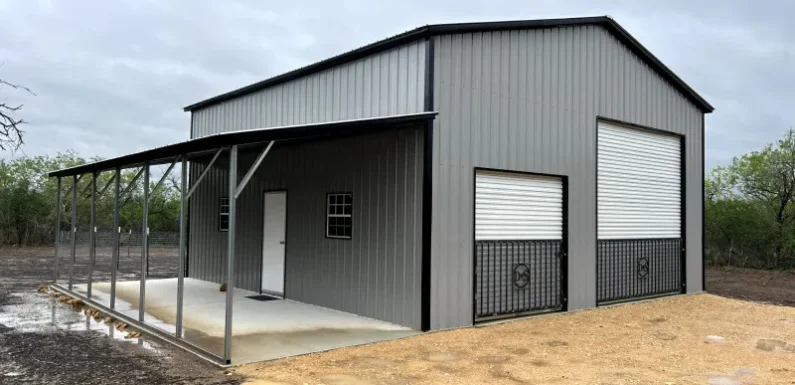
Lean-to steel buildings have become one of the most strategic and cost-efficient ways to increase usable space without committing to a full expansion or constructing a separate structure. They are widely adopted across residential, agricultural, and commercial properties for their versatility, simplicity, and long-term durability. Manufacturers such as US Patriot Steel design lean-to systems that integrate seamlessly with the main building, creating an extension that looks unified, performs reliably, and adds significant functional value.
What Makes a Lean-To Steel Building Unique?
A lean-to is a single-slope structure positioned against the side or end of an existing building. One side ties into the main wall at a higher point, and the roof slopes outward. This simple design makes lean-tos exceptionally adaptable: they can be left completely open, partially enclosed with side panels, or fully enclosed to function almost like an additional room. Because the engineering is straightforward, lean-tos can be installed quickly, giving property owners an immediate space upgrade without major construction delays.
Key Benefits of Lean-To Steel Buildings
One of the greatest advantages of a lean-to is affordability. Compared to building a full addition or constructing a new standalone building, lean-tos require fewer materials, less labor, and minimal site preparation. This results in significantly lower costs while still providing the extra square footage needed for storage, shelter, or workspace. Many buyers choose lean-tos as an intermediate solution—something that expands practical space today while still allowing future enhancements or enclosures later.
Lean-tos also offer strong weather protection. Even when open-sided, they shield vehicles, machinery, hay, livestock, and equipment from rain, harsh sunlight, snow, and falling debris. In climates with intense heat or unpredictable storms, having a covered extension becomes a valuable asset. The open design encourages airflow, reducing moisture buildup and helping to prevent mold, rust, and overheating of stored equipment.
Another advantage is usability. Because there are no interior posts or dividing walls, lean-tos provide wide, easily accessible covered space. Farmers use them for tractors, implements, feed areas, or animal shelters. Homeowners rely on them for firewood storage, yard equipment, recreational vehicles, or outdoor workstations. Businesses benefit from lean-tos by adding covered loading zones, staging areas, or extra operational space that can be accessed without entering the main building.
Cost Considerations
The cost of a lean-to steel building depends primarily on size, height, enclosure level, and engineering requirements. Open lean-tos are the most economical, while enclosed versions—especially those with roll-up doors or insulation—sit at the higher end. Additionally, local wind and snow load codes influence the necessary steel gauge and frame reinforcement, affecting the overall price. Despite these variables, lean-tos consistently remain one of the most budget-friendly ways to expand a steel building without sacrificing durability.
Most Common Use Cases
Lean-tos are used in nearly every industry because of their flexibility. In agriculture, they provide shelter for livestock, hay protection, equipment bays, or shaded work areas. Residential properties use lean-tos for RVs, boats, ATVs, lawn machinery, or covered patios. Commercial operations rely on them for forklift zones, shipping and receiving bays, external storage areas, or protected workspace extensions. Their modular nature also allows owners to enclose the lean-to later if additional security or climate control becomes necessary.
Conclusion
Lean-to steel buildings provide a practical, affordable, and highly adaptable way to expand your existing structure. Their simple engineering, quick installation, and broad range of uses make them a smart choice for property owners who need more space without investing in a major construction project. When manufactured and installed correctly, a lean-to becomes a valuable long-term asset, extending the functionality of your building and enhancing how efficiently your property is used.
